Bird watching is a captivating pursuit that brings us closer to nature’s winged wonders, with small birds presenting some of the most rewarding yet challenging subjects to observe. Whether you’re trying to distinguish the intricate patterns on a warbler high in a tree canopy or hoping to spot the delicate movements of a kinglet flitting through dense foliage, having the right optical equipment makes all the difference. Small songbirds, with their vibrant colors, distinctive behaviors, and often elusive nature, require binoculars that offer exceptional clarity, sufficient magnification, and comfortable handling for extended viewing sessions. This guide will explore the essential features and top recommendations for binoculars specifically suited to observing our smallest feathered friends.
Understanding Binocular Specifications for Bird Watching
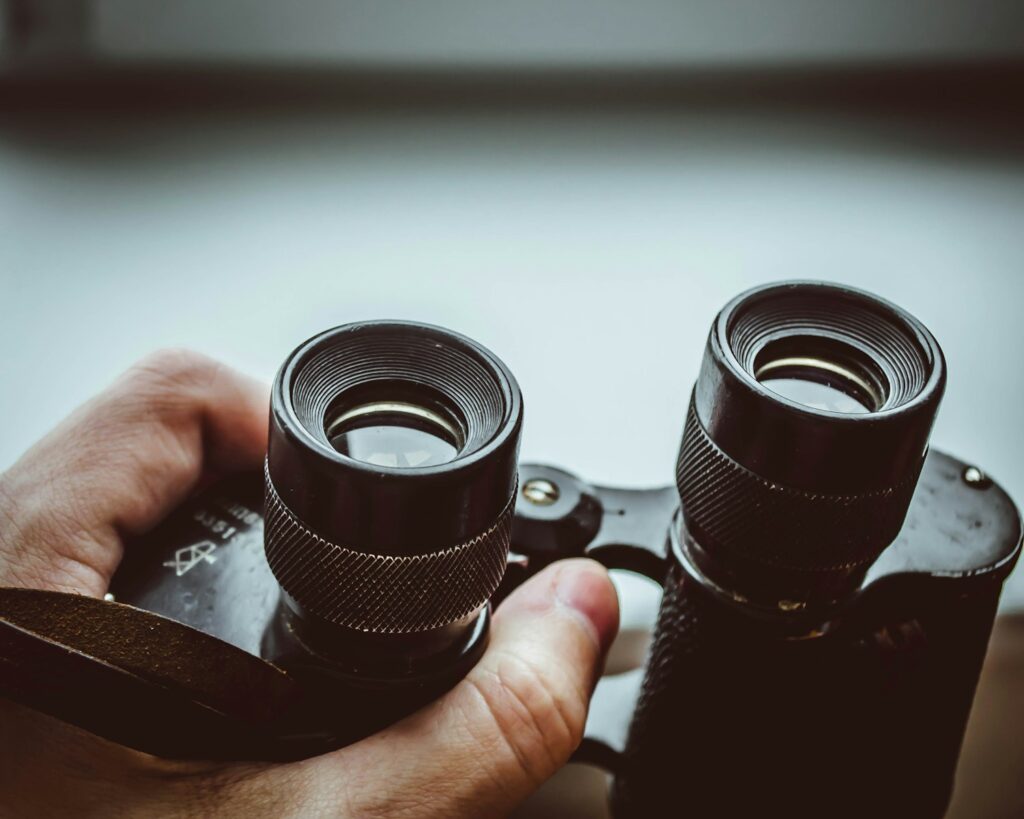
When shopping for binoculars, you’ll encounter numbers like 8×42 or 10×32, which represent fundamental specifications that determine performance. The first number indicates magnification power (how many times closer the subject appears), while the second number represents the objective lens diameter in millimeters (affecting light-gathering ability and brightness). For small bird watching, the ideal balance typically falls between 8x and 10x magnification, offering sufficient detail without sacrificing field of view or stability. Objective lens diameters between 30mm and 42mm provide excellent light transmission while maintaining a manageable weight, though larger objectives will deliver superior performance in low-light conditions. Understanding these specifications helps navigate the vast array of options and narrow down choices to those best suited for spotting diminutive avian species.
The Importance of Field of View

Field of view (FOV) refers to the width of the area visible through your binoculars at a specific distance, usually measured in feet at 1,000 yards or degrees. When observing small, active birds that move quickly through vegetation, a wider field of view is invaluable as it allows you to locate and track them more effectively. Binoculars with 8x magnification typically offer a wider FOV than those with 10x, making them preferred by many birders focusing on warblers, finches, and other small species. Premium models optimize this specification even at higher magnifications through advanced optical design. A field of view of at least 330 feet at 1,000 yards is recommended for small bird observation, though wider is better when trying to follow the erratic movements characteristic of many smaller avian species.
Close Focus Capability: A Critical Feature
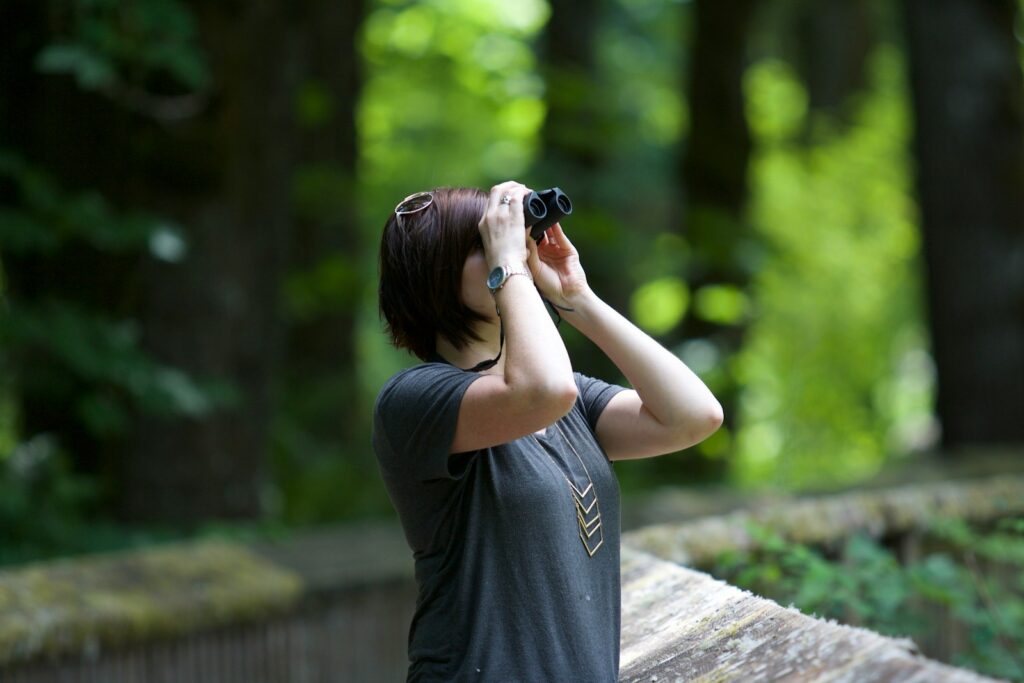
The minimum focus distance of binoculars determines how close you can be to a bird while maintaining clear focus, a specification particularly relevant when observing small birds that may approach feeders or perch nearby. Modern premium binoculars often offer close focus distances of 6 feet or less, allowing for detailed observation of diminutive species at surprisingly intimate ranges. This feature transforms what would otherwise be frustrating near-field encounters into exceptional viewing opportunities, revealing minute details of plumage, feeding behaviors, and interactions. Birders frequently find themselves unexpectedly close to subjects, especially in gardens, parks, or established feeding areas, making close focus capability an essential consideration rather than a luxury feature when selecting optics for small bird observation.
Optical Quality and Coatings
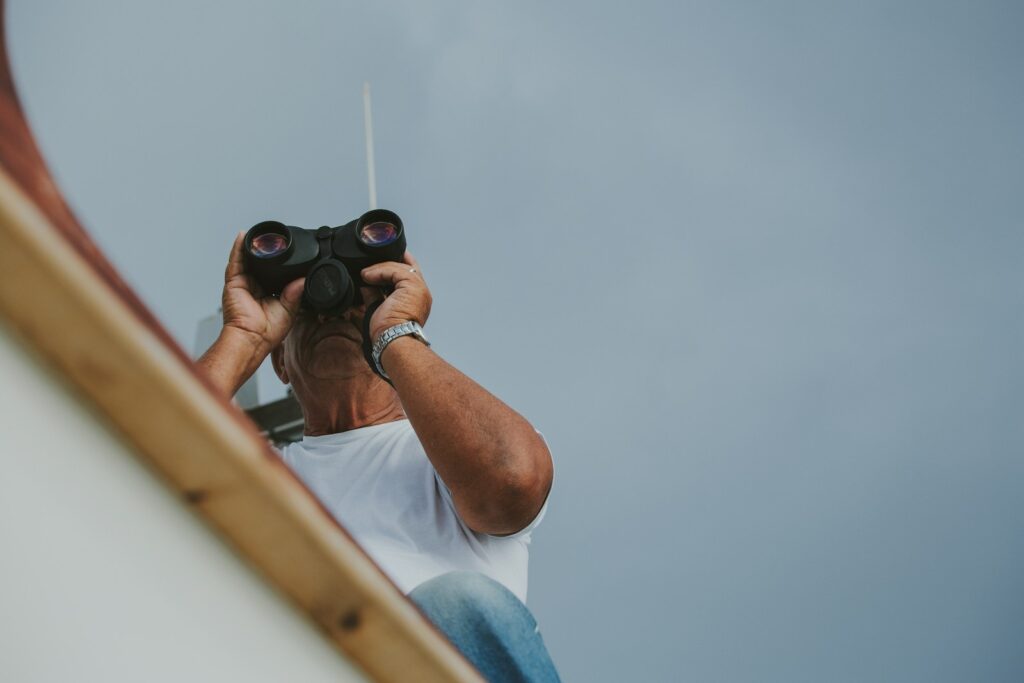
The clarity with which you can discern the subtle field marks and delicate features of small birds depends largely on the quality of glass and coatings in your binoculars. Premium models utilize extra-low dispersion (ED) or high-definition (HD) glass that minimizes chromatic aberration (color fringing), resulting in sharper images with truer colors—critical when trying to identify species based on subtle plumage details. Multiple anti-reflective coatings on all air-to-glass surfaces (described as “fully multi-coated”) maximize light transmission and contrast, essential for observing birds in dappled light or dense foliage where many small species prefer to forage. Phase-correction coatings on roof prism binoculars and dielectric coatings on mirror surfaces further enhance image quality and brightness. These optical treatments represent the difference between merely seeing a small bird and appreciating its finest details.
Weight and Ergonomics Considerations
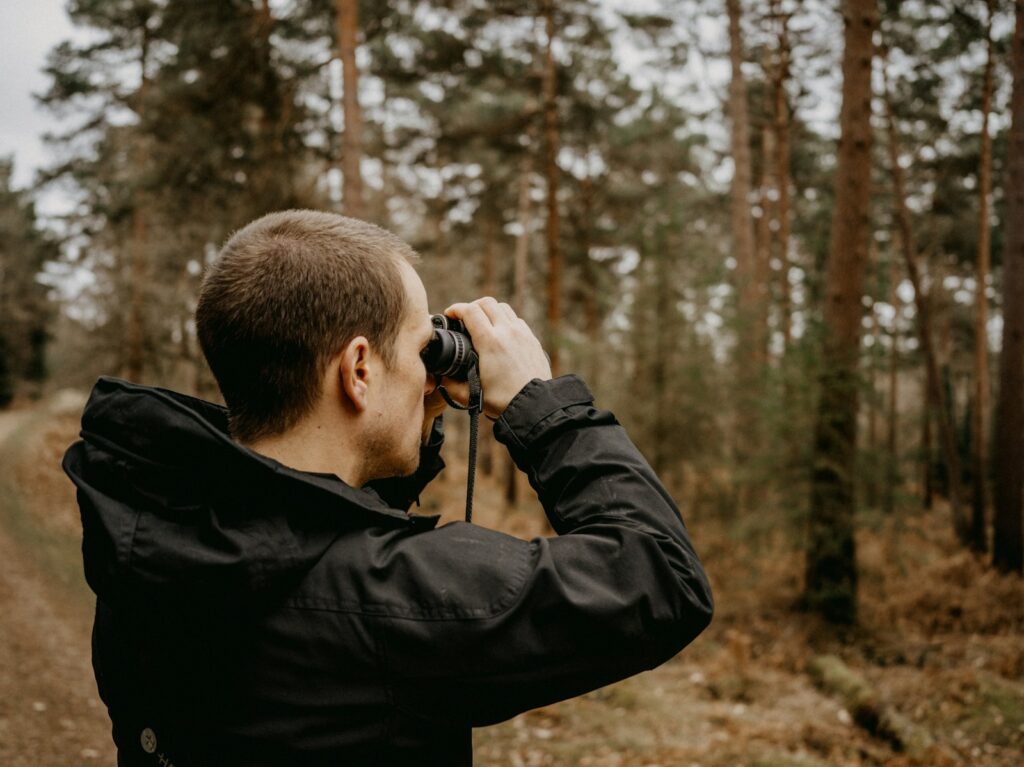
Extended periods of observation are common in bird watching, making the physical characteristics of binoculars crucial to both comfort and steady viewing. Lightweight models reduce fatigue during all-day outings, with weights below 28 ounces generally considered comfortable for extended use. Beyond mere weight, the ergonomic design affects how naturally the binoculars fit in your hands and how easily you can maintain a steady image when tracking small, active birds. Features like thumb indents, textured surfaces, and balanced weight distribution contribute significantly to handling comfort. The focus wheel should turn smoothly with enough resistance to prevent accidental adjustments yet allow for quick focusing as birds move between different distances. These physical considerations become particularly important when observing smaller species that require more precise focusing and steadier holding to appreciate their minute details.
Top Recommendations in the Premium Category
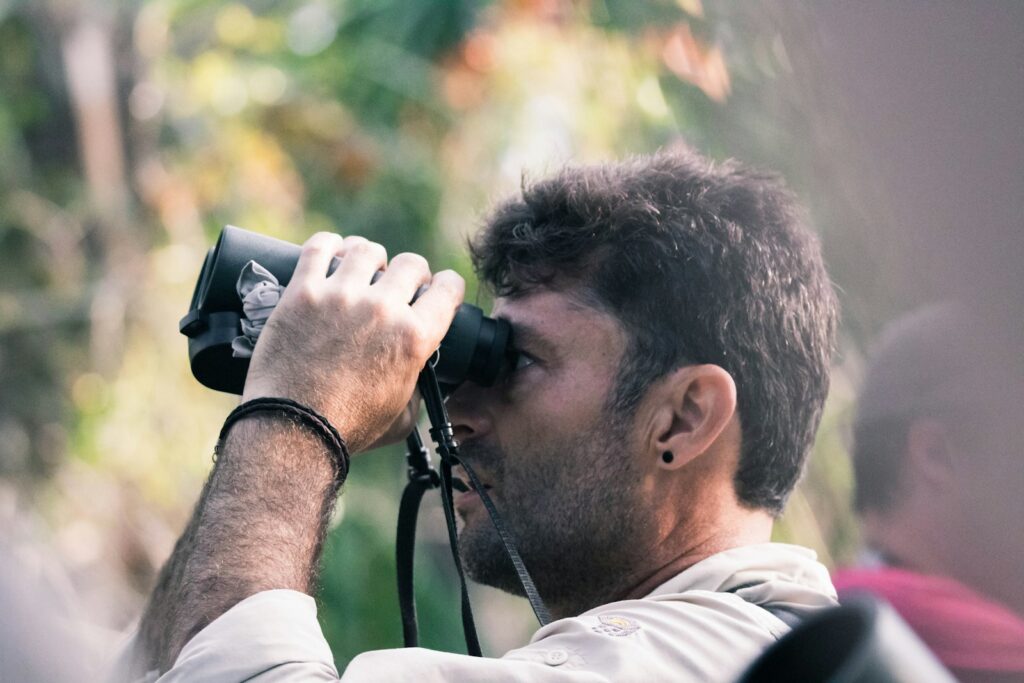
For birders able to invest in top-tier optics, several models stand out for their exceptional performance in small bird observation. The Swarovski EL 8.5×42 combines outstanding edge-to-edge clarity with a generous field of view and remarkable low-light performance, making it ideal for observing warblers in dawn chorus or under dense canopy. Zeiss Victory SF 8×42 binoculars offer an extraordinarily wide field of view (444 feet at 1,000 yards) with a close focus of just 5 feet, perfect for tracking active small birds through complex environments. The Leica Noctivid 8×42 delivers exceptional contrast and color fidelity that reveals the subtlest plumage details, while its balanced design reduces fatigue during extended viewing sessions. These premium options represent significant investments ranging from $2,000 to $3,000, but their superior optical performance and durability make them lifetime purchases for dedicated birders focusing on challenging small species.
Mid-Range Options with Outstanding Value
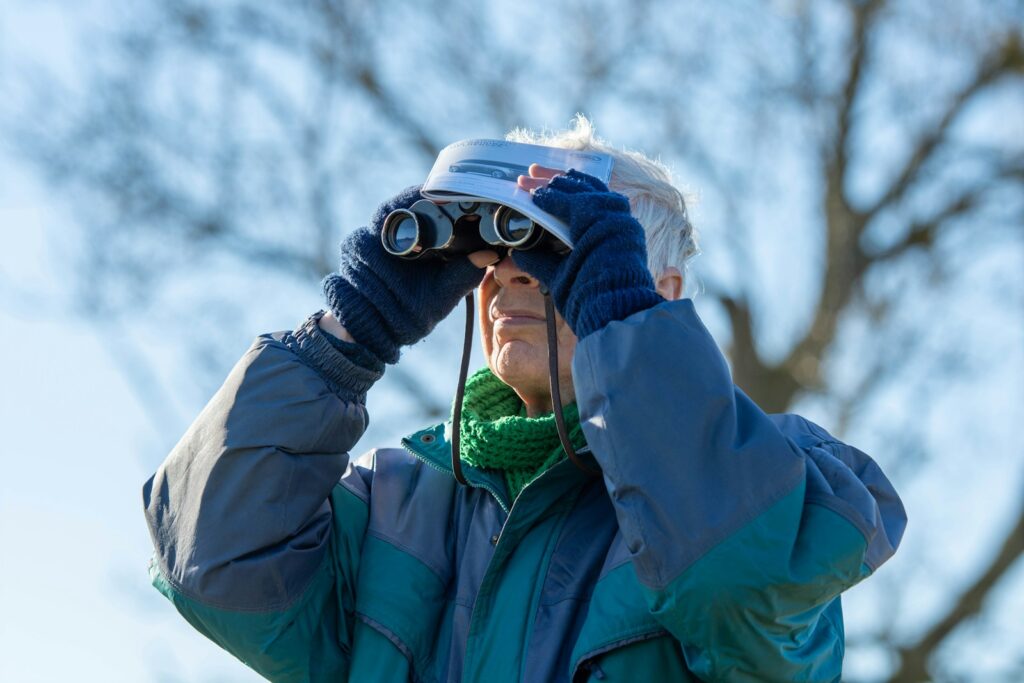
Excellent options exist in the $500-$1,000 range that deliver remarkable performance for observing small birds without the premium price tag. The Vortex Viper HD 8×42 combines ED glass with fully multi-coated lenses to produce sharp, bright images with minimal color fringing, while maintaining a manageable weight of 24.5 ounces. Maven’s B.1 8×42 offers customizable aesthetics alongside impressive optical performance, with a wide field of view and exceptional close focus capability of just 3.3 feet for detailed observation of nearby small birds. The Nikon Monarch HG 8×42 incorporates field-flattener lenses that maintain sharpness across the entire field of view, particularly valuable when trying to spot small birds moving through foliage at the image periphery. These mid-range binoculars provide excellent clarity, brightness, and handling characteristics that satisfy the needs of most serious birders focusing on small species.
Budget-Friendly Binoculars for Beginners

Newcomers to bird watching can find several models under $300 that perform admirably for observing small birds while learning identification skills. The Celestron Nature DX ED 8×42 incorporates extra-low dispersion glass—unusual at this price point—to deliver surprisingly sharp images with good color accuracy for identifying small species. Vortex Diamondback HD 8×42 binoculars offer excellent optical clarity with a wide field of view (393 feet at 1,000 yards) and close focus of 5 feet, making them versatile for observing birds at various distances. The Nikon Monarch 5 8×42 provides reliable performance with good low-light capability and comfortable ergonomics suited to extended viewing sessions. These budget options may lack the refined edge clarity and ultimate brightness of more expensive models, but they provide more than adequate performance for developing bird watching skills and appreciating the beauty of smaller avian species.
Compact Options for Travel and Portability

Smaller binoculars with objective lenses between 25-32mm offer excellent portability for birders who prioritize convenience or travel frequently to observe birds. The Zeiss Terra ED 8×32 delivers impressive optical performance in a package weighing just 18 ounces, with enough brightness for most daytime observations of small birds. Leica’s Ultravid BR 8×20 represents the ultimate in premium pocket binoculars, offering remarkable image quality in an incredibly compact form that weighs only 8.5 ounces and can be carried in a jacket pocket. The Kowa BD II 8×32 XD provides an excellent compromise between size and performance, with premium glass delivering bright, sharp images in a mid-sized package. While these compact options sacrifice some light-gathering ability compared to full-sized models, they ensure you’ll always have binoculars available when unexpected opportunities arise to observe small birds, whether during business travel or casual walks.
The Case for Higher Magnification
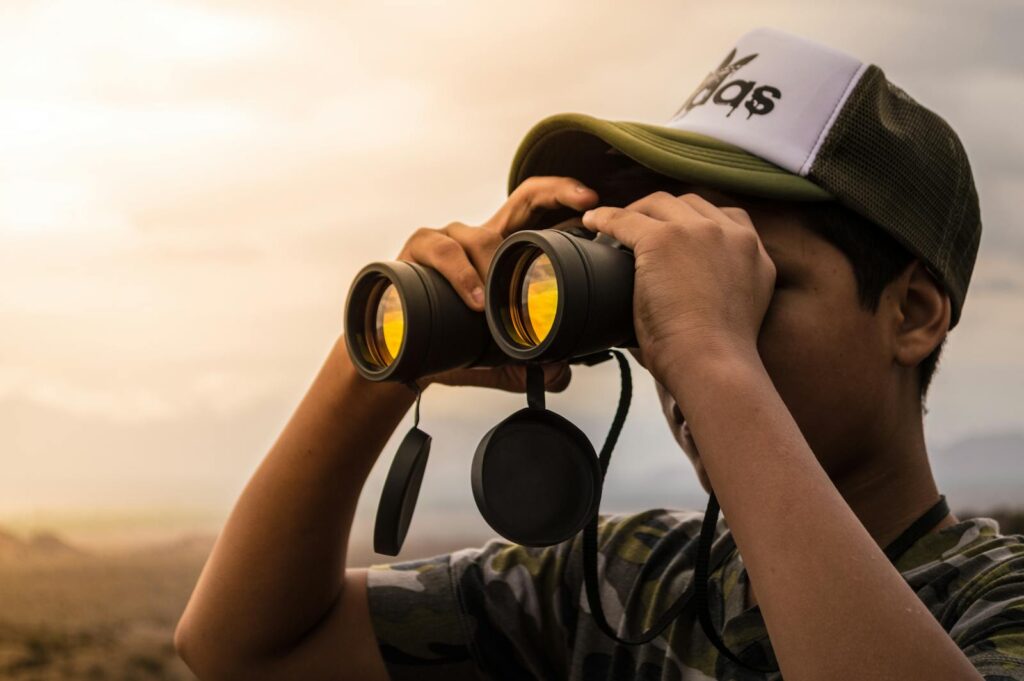
While 8x magnification is widely recommended for general bird watching, 10x binoculars offer advantages specifically for observing tiny details on small birds, particularly at greater distances. The additional magnification can reveal subtle field marks critical for the identification of similar species, like fall warblers or distant shorebirds. Models like the Vortex Razor UHD 10×42 combine higher magnification with exceptional optical quality to maintain good brightness and a reasonably wide field of view. However, the increased magnification comes with tradeoffs including the narrower field of view, more noticeable hand shake, and slightly dimmer images in low light. These limitations can be partially offset by choosing models with excellent optical coatings and stabilizing the binoculars against a surface or with a dedicated harness system. For experienced birders with steady hands who frequently observe small birds at longer distances, 10x binoculars represent a specialized tool worth considering.
Image Stabilization Binoculars

Image stabilization technology counteracts hand tremor, allowing for steadier views, particularly beneficial when observing small birds at higher magnifications. Canon’s 10x42L IS and 12×36 IS III binoculars utilize a gyro-sensor and microprocessor to detect and compensate for movement, resulting in remarkably steady images that reveal fine details even in challenging conditions. The electronic stabilization is activated by pressing a button, instantly calming the view and making it easier to discern minute field marks or observe behaviors of small, active birds. While these specialized binoculars offer unique advantages, they come with considerations including increased weight, dependency on batteries, and typically higher cost compared to conventional models of similar optical quality. For birders with naturally unsteady hands or those frequently observing in windy conditions, image stabilization binoculars can transform the viewing experience of small birds despite these limitations.
Maintenance and Care for Optical Performance
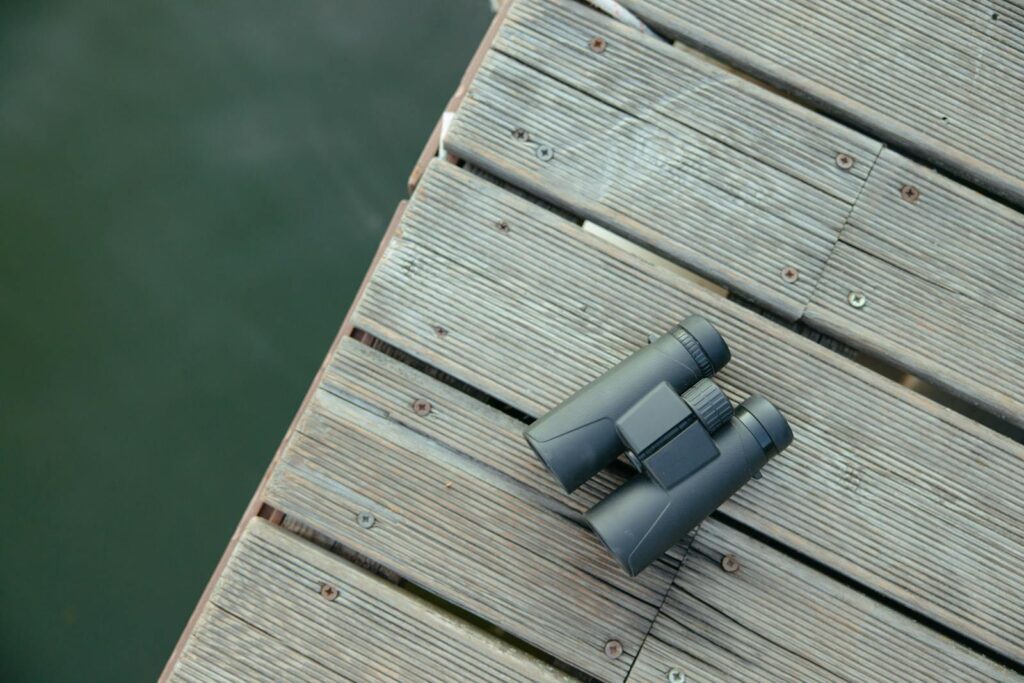
Maintaining the optical excellence of your binoculars ensures continued optimal performance when observing small birds with their subtle field marks and delicate features. Always use lens caps when not actively viewing, and carry binoculars in a protective case when traveling between locations. Clean lenses gently using a lens pen or microfiber cloth designed specifically for optics, starting by blowing away loose particles before wiping to avoid scratching the coatings. For more stubborn smudges, apply a tiny amount of lens cleaning solution to the cloth rather than directly to the lenses. Most quality binoculars feature waterproof and fogproof construction, but avoid unnecessary exposure to extreme conditions and never store binoculars in humid environments like car trunks during summer. With proper care, premium binoculars will provide decades of exceptional viewing experiences, making them a worthwhile investment for the dedicated observer of small birds.
Accessories That Enhance the Experience

Several accessories significantly improve comfort and convenience when spending hours observing small birds. A well-designed harness distributes weight across both shoulders rather than concentrating it on the neck, reducing fatigue during all-day outings. Tethered objective lens covers protect the optics while remaining attached to the binoculars, preventing loss during active field use. Specialized lens cloths and cleaning kits designed for optical equipment help maintain pristine views without damaging delicate coatings. Binocular tripod adapters provide ultimate stability for extended observation of stationary subjects like nesting birds, though they reduce mobility for tracking active species. Neoprene floating straps offer both comfort and protection against accidental immersion when birding near water bodies. These supplementary items represent modest additional investments that significantly enhance the practical aspects of using binoculars for extended small bird observation sessions.
Making the Final Decision

Selecting the ideal binoculars for observing small birds ultimately depends on balancing several factors including your specific birding habits, physical comfort requirements, and budget constraints. Consider the environments where you typically observe birds—dense forests may benefit from a wider field of view and better low-light performance, while open areas might favor higher magnification. Test multiple models before purchasing, if possible, paying attention to how they feel in your hands during extended use and whether the eyecups accommodate your personal viewing preferences, especially if you wear glasses. Remember that optical quality generally correlates with price, but diminishing returns apply at the very highest end of the spectrum. The best binoculars for you are those that you’ll consistently carry and use, combining sufficient optical performance for your needs with the physical characteristics that encourage regular enjoyment of your bird watching experiences.
In conclusion, selecting binoculars optimized for observing small birds involves careful consideration of optical quality, magnification, field of view, and physical characteristics. While premium models offer exceptional performance that reveals the finest details of tiny warblers and finches, excellent options exist at various price points to match different budgets and experience levels. The perfect binoculars combine technical specifications suited to small bird observation with ergonomics that encourage extended use and regular field excursions. By understanding the key features that enhance the viewing experience of our smallest feathered friends, birders can make informed choices that will provide years of enjoyment and foster a deeper appreciation of these fascinating creatures.
